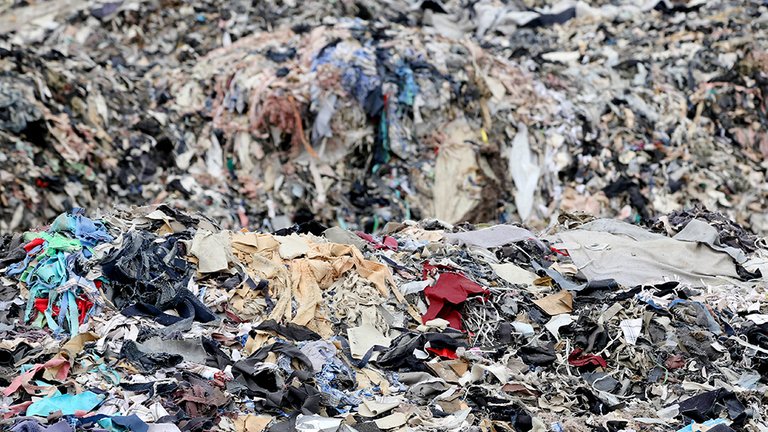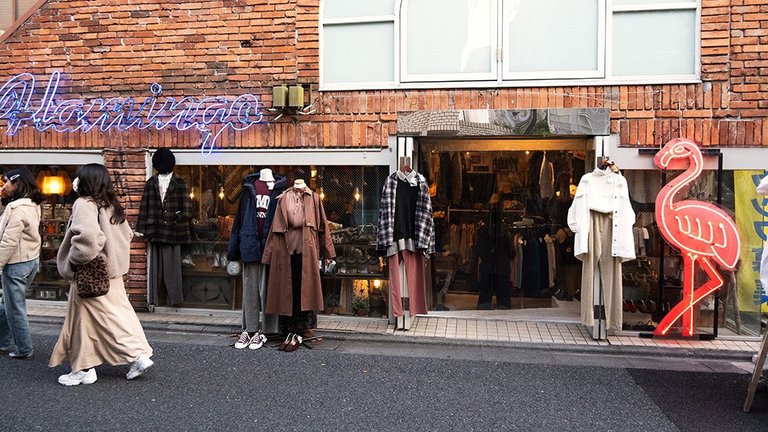The fashion industry is one of the most wasteful industries in the world. Each year, companies waste a staggering amount of textile to increase profits and sales. Although nearly 100% of textiles are recyclable, nearly 95% of reusable textile is discarded. In order to understand how we buy and discard our clothing, it is also necessary to provide information as to why finding alternate options can help save the planet.
The negative environmental impact spurred by cheap, fast and wasteful methods is far more severe than many would like to believe. Unknown amongst most consumers, the fashion industry accounts for nearly 10% of global carbon emissions; this percentage accounts for more energy consumption than both aviation and shipping combined. Furthermore, the fashion industry also produces roughly 20% of the world’s waste water.
(Image: Shutterstock)
These figures are only a tip of the iceberg when it comes to the longstanding consequences associated with fast fashion. More may be said about its destruction of farmland due to chemicals and other practices that may destroy the environment. Although there are many companies who are now using sustainable alternatives, it is also important for us as consumers to understand that what we buy and discard also holds us accountable for greenhouse emissions, negative environmental impact and the production of waste water.
Here are some important things we as consumers can do to make better choices when purchasing or choosing clothing.
Refuse: choosing away from irresponsible fashion brands
One of the first steps consumers can take is the refusal of purchasing new clothes, especially from companies that may not be taking the proper precautions in order to protect its workers or the environment. Refusing to purchase goods that leave a high carbon footprint might be the first step into finding different alternatives when it comes to fashion consumption. The refusal of fashion by consumers would ultimately cause the fashion industry to change their methods and techniques regarding the manufacturing of clothes.
Buy responsibly: secondhand clothing as a zero waste option
Although it is clear that refusing to purchase clothing is the first step, it might be difficult to know what steps to take next. Fortunately, there are a number of options for consumers and individuals alike. One simple option is to purchase clothes from secondhand shops. Secondhand shops have become staples in larger cities such as Osaka and Tokyo. Many secondhand shops also offer the option for individuals to donate clothing. This is a convenient way for us to not only shop, but to donate clothing that still has some life in it.
For example, there are plenty of secondhand stores around Japan for a zero waste fashion option. (Image: Shutterstock)
One town Japan has taken it upon itself to create a zero waste society. Kamikatsu, Japan has made great strides in creating a town that is sustainable, and values secondhand items and clothing. The small village located in Tokushima is looking toward the future by hoping to one day actualize its dream of recycling 100% of the waste it produces. Kamikatsu has begun inspiring other towns across the island country to do the same; although the population of the village is only around 1500 people, it proves that even some of the smallest places can have a major influence.
Repair and Reuse: upcycled fashion as the trendy alternative
As explained earlier, the majority of discarded textile may be recyclable or reused. Instead of repairing garments and other clothing, a general consumer’s approach may be to buy something new. Unfortunately, once a small rip or hole develops, it is a normalized practice in the developed world not to think about repairing what could be reused once more. It is also safe to note that although material from used clothing can be donated to stores who specialize in manufacturing apparel through donated and found garments, and Japan’s designers have begun to build upon this trend that is both sustainable and ethical. This is upcycled fashion.
(Image: Shutterstock)
Upcycling is a technique that takes discarded or older pieces of clothing and creating apparel that outperforms the original. These clothes are usually considered to have greater artistic or environmental value and help create a more circular economy. A linear economy focuses on a consumer’s tendency to buy, use and then discard such items. Creating a circular economy using “unwanted” fabrics and textile could help reduce waste that is created by and within the fashion industry and its consumers. Moreover, upcycling and the use of a circular economy helps to ensure that discarded clothing can be used as long as it is in good condition.
What is happening in Japan
Over the past twenty years, Japanese consumers have become increasingly aware of sustainability in the world of fashion. This follows a global trend that stems from our increasing awareness about how manufacturing processes may distort or take advantage of not only the environment, but also workers from poorer countries. This has led to a surprising outflow of fairtrade practices from businesses within Japan.
Towns and cities throughout the country have been certified as fair trade cities. Kumamoto was the first city in Japan to be accredited as a fair trade city and continues to promote fair trade products around the region. In Tokyo, the Mottainai Market is also available to take in donations. This flea market, which is held every weekend, allows individuals to donate or purchase used clothing. Mottainai Market also contributes much of its proceeds to the Greenbelt Movement, which is a project to plant trees in Kenya.
It is possible for us to reduce textile waste
There are many things you can do to help reduce the amount of clothing thrown away in our world. Although it might seem harmless to throw away something that appears to have outlived its usefulness, it is important to take a step back and find solutions that will have less of a negative impact on our lives, the environment, and the planet.
(This article was originally published on Zenbird Media.)
Additional Resources
Zenbird Media Homepage
For news on sustainable fashion
More on zero waste in Japan
Hi! I am a robot. I just upvoted you! I found similar content that readers might be interested in:
https://zenbird.media/what-can-we-do-to-prevent-waste-in-the-fashion-industry/